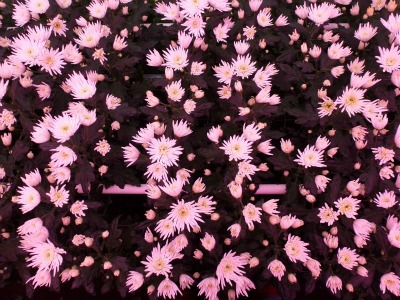
Features
Lighting
Structures & Equipment
More trials underway with mums under LEDs
January 21, 2013 By Philips Lighting
Jan. 21, 2013 — Philips – in collaboration with growers Beyond, River Flowers,
along with suppliers Stolze and DLV Plant – has started two new trials with chrysanthemums
under LEDs.
Jan. 21, 2013 — Philips – in collaboration with growers Beyond, River Flowers,
along with suppliers Stolze and DLV Plant – has started two new trials with chrysanthemums
under LEDs.
The trials are being conducted on locations at Beyond and River Flowers. They are follow-ups to the trials that were completed in February 2012 at Botany in Horst.
The trial was set up by Philips to help finetune a new LED solution.
"Beyond stands for sustainable, top-quality chrysanthemums, and Philips' innovative hybrid lighting fits in with this," Martijn Duijvesteijn of Beyond explained.
The purpose of the follow-up trials is to take the technology into commercial greenhouses.

|
| Philips is conducting trials growing mums under LEDs and HPS lighting. |
The previous trials showed that quality can be improved and production increased when chrysanthemums are grown under LEDs.
The hybrid light treatment, in which 50μmol/m2/sec of LEDs and 50μmol/m2/sec of SON-T were installed, increased growth efficiency (more grams of fresh weight per mole of light) by 6.6 per cent.
During the trials at Beyond and River Flowers, researchers will look at whether this can be achieved with different varieties and different light levels as well. The trials will be completed in early February.
A hybrid lighting system is being utilized – LEDs will be used in combination with the existing HPS lighting. Several spectral treatments have been fitted in order to achieve the most sustainable solution.
Both Beyond and River Flowers are looking forward to the results.
"By combining the existing HPS installation with Philips' latest LED technologies,” said Peter van de Werken of River Flowers,” we can optimize growth and therefore yield, but also control elongation and flowering.
“In this way a good ratio between (radiant) heat, light quantity and light spectrum gives opportunities for more sustainable production and for providing a more consistent and heavy quality of chrysanthemums throughout the year. And that's exactly what our market is looking for."
Print this page